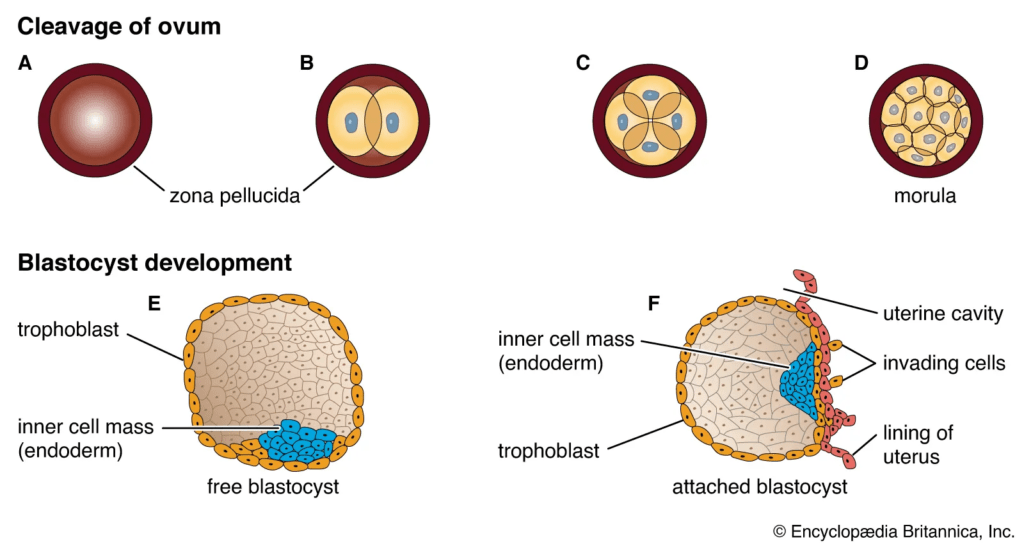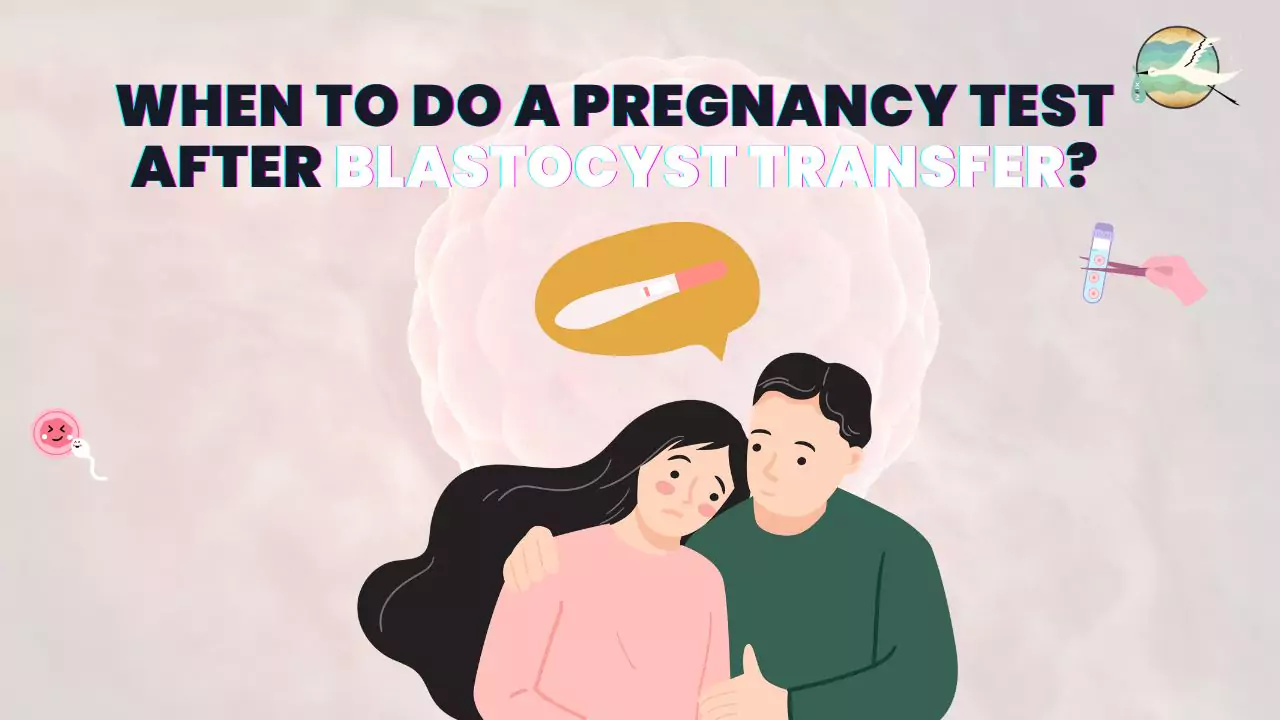Curious about when to do a pregnancy test after blastocyst transfer? Read on to get expert insights and advice for accurate results.
Parenthood is an amazing process of nature that is made possible by complex biological processes that take place inside the body. The blastocyst, a tiny but crucial player in the birth of life, is at the center of this amazing journey. In this article, we explore the fascinating world of blastocyst development, revealing its importance and illuminating the wonder that takes place in the earliest stages of pregnancy.
Table of Contents
What is Blastocyst?
A blastocyst is a young stage of embryonic development in mammals, including humans. It develops approximately 5–6 days after an egg is fertilized by a sperm. The fertilized egg divides repeatedly during this stage and develops into a hollow ball-like structure made up of two different cell types: the inner cell mass and the outer trophoblast.
The trophoblast helps form the placenta and other supporting structures required for the development of the embryo and its implantation into the uterine wall, while the inner cell mass eventually develops into the fetus.
When an embryo reaches the blastocyst stage, it is prepared for implantation into the uterus, where it will continue to grow and develop until it is a fully formed organism.

Image Credit: BYJU’S
Blastocyst Development: Quick Facts
- Blastocysts form 5-6 days after fertilization.
- Around 200-300 cells, with ICM (inner) and trophoblast (outer).
- Trophoblast attaches to the uterus for pregnancy.
- Hatching preps for implantation, boosting IVF success.
- Pregnancy test 9-11 days later for accuracy.
- Quality matters for implantation and success.
- Blastocysts can be frozen for future use.
- Vital for starting pregnancy, guided by experts.
Blastocyst diagram

Blastocyst hatching
The crucial embryonic development process of blastocyst hatching takes place just before implantation. A developing blastocyst, which is a ball-shaped structure made from a fertilized egg, goes through a delicate process of entering its outer shell, known as the zona pellucida, during this stage. The blastocyst can interact more directly with the uterine lining thanks to this hatching, which helps to facilitate successful attachment and implantation.
The zona pellucida gradually thins out as the blastocyst grows and develops. The blastocyst’s inner cell mass eventually protrudes through a tiny gap that eventually forms in the zona pellucida. The blastocyst can make contact with the uterine lining thanks to this protrusion, which starts the implantation process. A connection must be made between the developing embryo and the maternal tissues for the blastocyst to hatch successfully. This connection enables the exchange of nutrients and waste products required for the embryo’s ongoing growth and development.
Early in pregnancy, a process known as blastocyst hatching, which is complex and highly coordinated, is crucial. It is a vital step in ensuring the embryo’s successful attachment and subsequent development inside the uterus.
When to do a pregnancy test after blastocyst transfer?
By detecting the presence of hCG in the urine, home pregnancy tests function. This hormone, which is produced by the embryo shortly after implantation, is also found in blood tests. Throughout the first trimester, its levels gradually rise, and during the following six months, they start to decline.
Premature pregnancy testing after blastocyst transfer has some potential risks. Some of the hormones you received prior to egg retrieval may still be present in your body and are excreted in your urine and blood. Therefore, if you test for pregnancy too soon after blastocyst transfer, a positive result may only be an indication that there is still hCG present from your treatment.
The blastocyst can take a few days to implant and another few before the resulting levels of hCG are sufficient to be detectable, so an early pregnancy test could, in contrast, result in a false negative. Tests on blood are more precise. In order to confirm your pregnancy, we always ask you to visit your fertility clinic for a Beta hCG test.

How many cells are in a blastocyst?
Normally, 200 to 300 cells make up a blastocyst. These cells are arranged into the inner cell mass (ICM) and the trophoblast, which is the outer layer. The placenta and other supporting tissues required for implantation and early development are produced by the trophoblast, while the embryo eventually develops from the ICM. The blastocyst goes through a process of differentiation and compaction that results in the formation of these distinct cell populations within its structure as it grows and gets ready for implantation.
How many 8-cell embryos make it to Blastocyst?
Not every 8-cell embryo will inevitably mature into a blastocyst. The quality of the embryos and the environment in the laboratory are two factors that can affect how quickly an 8-cell embryo develops into a blastocyst.
An important percentage of 8-cell embryos may develop further and reach the blastocyst stage on average in a typical IVF cycle. The precise percentage, however, can differ significantly depending on the woman’s age, the quality of the embryos, the level of experience in the laboratory at the fertility clinic, and the specific protocols used during the IVF procedure.
Discussing the possible results and success rates with your fertility specialist is crucial because they can offer more personalized information based on your unique circumstances and the specifics of your IVF cycle.
Which layer of blastocyst gets attached to the endometrium?
The trophoblast, or outer layer of the blastocyst, is the layer that fuses to the endometrium (the lining of the uterus) during the implantation process. The trophoblast is in charge of creating a link between the developing embryo and the maternal tissues. This connection is essential for the exchange of nutrients, waste products, and other necessary elements that support the embryo’s growth and development. These initial stages of pregnancy require the trophoblast to attach to the endometrium and then interact with it.
Frequently Asked Questions on Blastocyst Transfer
Q. What is the role of the inner cell mass (ICM) in a blastocyst?
The ICM gives rise to different cell types in the body as the fetus develops, which helps the body’s tissues and organs take shape.
Q. What is the trophoblast in a blastocyst?
The blastocyst’s outermost layer of cells is known as the trophoblast. By adhering to the uterine lining and forming the placenta and other supporting structures, it plays a crucial part in implantation.
Q. How does a blastocyst attach to the uterus?
During implantation, the blastocyst’s trophoblast layer fuses to the uterine endometrium. The establishment of pregnancy and the exchange of nutrients depend on this attachment.
Q. When does blastocyst hatching occur?
The process of blastocyst hatching involves opening its zona pellucida (outer shell). It typically happens right before implantation, giving the blastocyst a chance to interact with the uterine lining more directly.
Q. How many cells are in a blastocyst?
Usually, 200 to 300 cells, arranged into the ICM and trophoblast, make up a blastocyst.
Q. How long does it take for a blastocyst to form after fertilization?
Five to six days after fertilization, a blastocyst develops.
Q. Can all 8-cell embryos develop into blastocysts?
While many 8-cell embryos might develop to the blastocyst stage, not all of them will because of things like embryo quality and laboratory conditions.
Q. When can I take a pregnancy test after blastocyst transfer?
To ensure accurate results, it is typically advised to wait 9–11 days after blastocyst transfer before taking a pregnancy test.
Q. What is the significance of blastocyst development in fertility treatments?
A significant accomplishment in fertility treatments like IVF is blastocyst development. It raises the likelihood of a successful pregnancy and signals the embryo’s readiness for implantation.
Related Posts:





[…] When to do a pregnancy test after blastocyst transfer? Crucial Phase in Early Pregnancy […]